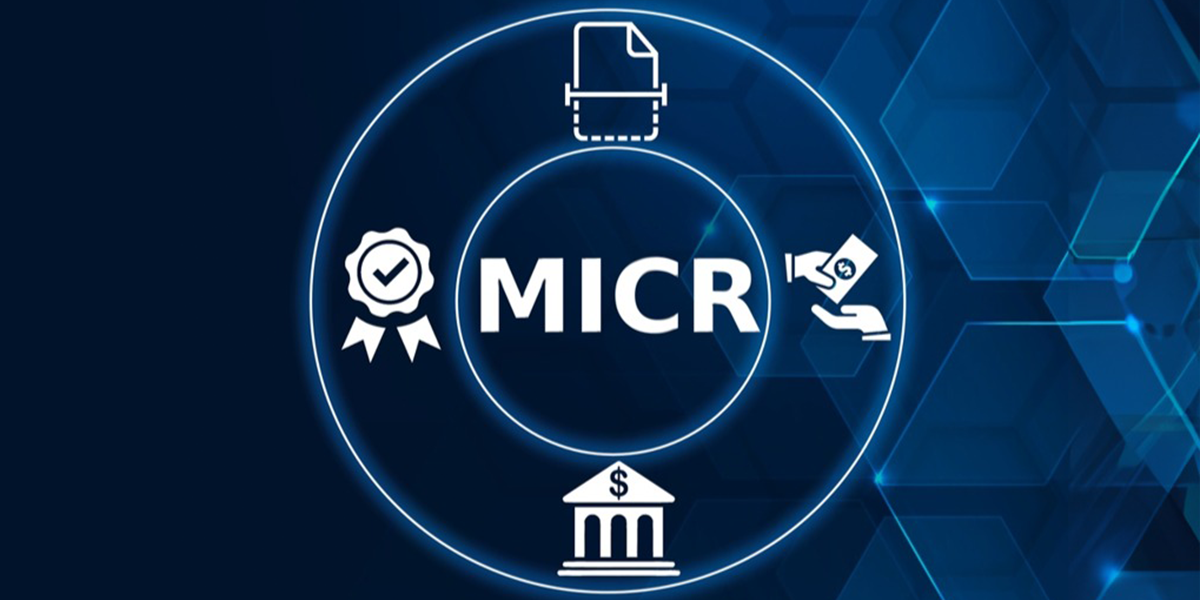“But can it scan ID cards too?”
About four or five years ago, customers started asking us that about our teller check scanners. The question had come up occasionally before, but around 2018 to 2019, suddenly it was everywhere.
Today, ID card capture is a big enough deal that we include it in virtually all our new models – but why the overnight surge in interest? What’s so different about it now that it’s more important than it was a few years ago? To answer that, let’s take a quick look at what the “new” generation of ID scanning is – and what it isn’t.
The biggest current benefit of ID capture? (It has nothing to do with security.)
Most people’s first instinct when ID capture is mentioned alongside bank transactions is that it must be part of a new high-tech security measure. Maybe the scanner will take your name and address and run them through a database, or at minimum, it’ll validate the physical features to make sure it’s not a fake – right?
The reality is that while all that sounds neat, most banks aren’t using ID card scanning that way yet because of cost and time considerations (more about that later). But one thing they CAN use it for is filling in forms using information captured from the card, and that’s proven to be a big time-saver. For lengthy, repetitive tasks such as account openings, loan originations, CD setups, and the like, it can significantly cut down the time needed to complete an interaction.
Because of that, ID scanning has begun to find a productive home in an unexpected place: not at the teller window, but at the personal banker desks off to the side of the branch, where most of those complex transactions tend to happen. And perhaps just as surprisingly, it’s not the standard batch feed scanners that are popping up there, but the smaller single-feed models that are better known as remote deposit capture devices.
What makes this unusual pairing work? Well, when you think about the process of, say, opening a new account, it typically involves processing the customer’s ID and possibly one or two checks or internal deposit slips, so a batch feed scanner would be overkill. At the same time, the existing workflow for that transaction might still involve many other devices: A flatbed scanner, a photocopier, a signature pad, and yes, a check scanner – and these will often be located in other parts of the branch, meaning the banker has to get up and walk over to them before continuing.
The bottom line is that an inexpensive single-feed check scanner at a personal banker’s desk can often replace one or more other devices, on top of shaving minutes of time off complex transactions. Not only is it an operational win, but the customers tend to appreciate it too.
An anti-fraud enhancement? Maybe, but not the way you think!
So, back to the big question: What about running validation on a scanned ID as a “due diligence act” in compliance with federal Know Your Customer (KYC) anti-fraud measures?
That was the first thing that most banks used to ask us about, and some have tried it. But the truth is, what’s technically possible and what’s practical for your typical transaction are not the same thing. TV crime dramas have made it seem like running detailed background checks is easy and instantaneous, but it doesn’t work that way in the real world. So you’ve scanned the information from someone’s ID – the rest doesn’t just happen automatically. Whose database are you going to run it through, and how are you going to do it?
The answer is that you’re going to need to hire a third-party service to do the actual checking, and it’s neither easy nor inexpensive. (One major bank reported it would have also cost them $10 million up front plus $2 million in annual licensing fees to implement!) Pinging external services, such as a state database to make sure a driver’s license is valid, can take anywhere from 30 seconds to a couple minutes, and it can cost up to $1.50 per request – making it both time- and cost-prohibitive for your run-of-the mill teller transactions. There is a time and a place for this kind of validation, but doing it every time would add hundreds or even thousands of dollars per day to the operating cost of each branch.
Some banks have taken a selective approach to ID scanning, like using it only for high-value transactions such as a $10,000 cashier’s check. But even then, the number of false positives has rendered it a mixed bag when the customer experience is considered. In summary, doing a full validation is possible, and it’s not to say there won’t be a practical way to do it, eventually – but for now, it’s a niche use case.
One other use that’s increasingly come into play is the scanner’s ability to provide the 2D barcode data to either a teller program or a third-party service. This can assist with confirmation and verification for the federal KYC requirements. Banks are now being audited to ensure they are confirming the identity of the person making the transaction, and even capturing the information from the back of the ID card goes a long way toward proving you’re taking it seriously!
A very human security assist
What about the ways ID scanning CAN help in the fight against fraud? We asked Fred Lewter, our VP of client support services – one of our people who works directly with banks on the “nuts and bolts” of projects in the field – to explain. And as it turns out, sometimes the simplest measures are the most effective.
One of the things banks are looking to do right now is to simply read the 2D barcode on the back of the card and instead of running it through a database, simply compare it to the information on the front that can be read with Optical Character Recognition, or OCR. For that matter, even verifying that the barcode is valid at all will stop a lot of crooks in their tracks.
“The people out there who are trying to commit fraud come in all different levels of sophistication,” Lewter says. “So, while the savviest of them – the ones we’d call career criminals – might be able to get the barcode right, there’s another whole group who will have mistaken information, or even just have a barcode that’s designed to look valid to the human eye, hoping that’s the only way you check it. But if it’s fraudulent, a machine will easily spot it as a fake.”
On the other hand, top-tier professional fraudsters may be good enough to fool a machine, so what’s the most effective test against them is the human side of the transaction.
“Sophisticated criminals rely on fake IDs to commit fraud in bank branches, and they’re capable of creating fakes that thwart even a thorough verification process,” Lewter says. “The fraud departments at major banks have hundreds of examples of forgeries that pass the database checks – a fake ID that comes back as a valid Ohio driver’s license or a valid Florida driver’s license.
“How did they catch those people? Well, if they know their ID is a fake, just the act of someone scanning it through a machine is often enough to make them nervous. A lot of them start to act suspiciously when that happens, or sometimes they’ll even walk out and not come back. And with good reason. If you’re not 100% confident your forgery will pass the test – which is a lot to risk your freedom on – then you’re better off moving on.”
Best of all: It’s already built into your scanner.
In summary, ID card scanning is able to help fulfill three main purposes today: Bolstering your KYC credibility; streamlining the onboarding and customer lookup process; and certain anti-fraud verification – and this last part is still evolving rapidly! What’s the drawback of purchasing a check scanner with ID capture capability? Really none, since most current models include it as a standard feature.
If you’re wondering how that’s possible to do at no extra cost (or why it wasn’t standard on older models), it’s mostly because the exit path for checks in our scanners also doubles as a feed-and-return path for ID cards – they “go in the out door” and back, so to speak. That made it possible to do without adding a lot of extra components. Most notably, the same image sensors and rollers are used for both IDs and checks.
In order to produce images of the quality required for ID cards, we made improvements over older models, such as upgrading the image sensors from 300 dpi to 600 dpi and experimenting with different roller materials that would minimize slipping on plastic, which can cause problems when scanning in fine detail. However, since most of these also improved check scanning and involved little additional cost, they simply became part of the package.
We hope this article has provided you with some useful insight into the benefits of ID card scanning – as well as what it CAN’T do – and that you’ll consider us when making your hardware decisions in the future.




